- Events & Programs Home
- Calendar
- Accessibility
- Adults
-
Families & Teens
- Families & Teens Home
- 10x10 Teen Art Expo
- Art on the Rise
- Art Together: Art Making for Families with Children Ages 3–5
- Babies Sing with May Festival Minis
- Boy Scouts / Girl Scouts
- CAM Kids Day
- Family Storytime and Gallery Walk
- Family Studio: Art Making for Families with Children Ages 6–12
- Games in the Galleries
- Members-Only Baby Tours
- Public Baby Tours
- REC Reads
- Rosenthal Education Center (REC)
- Saturday Morning Art Class
- See Play Learn Kits
- Summer Camp
- Teen Fest: Zine and Comic Exchange
- RECreate
- Teachers
- Community Outreach
- Fundraisers
- Plan Your Own Event

- Events & Programs Home
- Calendar
- Accessibility
- Adults
-
Families & Teens
- Families & Teens Home
- 10x10 Teen Art Expo
- Art on the Rise
- Art Together: Art Making for Families with Children Ages 3–5
- Babies Sing with May Festival Minis
- Boy Scouts / Girl Scouts
- CAM Kids Day
- Family Storytime and Gallery Walk
- Family Studio: Art Making for Families with Children Ages 6–12
- Games in the Galleries
- Members-Only Baby Tours
- Public Baby Tours
- REC Reads
- Rosenthal Education Center (REC)
- Saturday Morning Art Class
- See Play Learn Kits
- Summer Camp
- Teen Fest: Zine and Comic Exchange
- RECreate
- Teachers
- Community Outreach
- Fundraisers
- Plan Your Own Event
George Bellows: American Life in Print
George Bellows: American Life in Print
- Home
- Plan Your Visit
- Art
-
Events & Programs
- Events & Programs Home
- Calendar
- Accessibility
- Adults
-
Families & Teens
- Families & Teens Home
- 10x10 Teen Art Expo
- Art on the Rise
- Art Together: Art Making for Families with Children Ages 3–5
- Babies Sing with May Festival Minis
- Boy Scouts / Girl Scouts
- CAM Kids Day
- Family Storytime and Gallery Walk
- Family Studio: Art Making for Families with Children Ages 6–12
- Games in the Galleries
- Members-Only Baby Tours
- Public Baby Tours
- REC Reads
- Rosenthal Education Center (REC)
- Saturday Morning Art Class
- See Play Learn Kits
- Summer Camp
- Teen Fest: Zine and Comic Exchange
- RECreate
- Teachers
- Community Outreach
- Fundraisers
- Plan Your Own Event
- Give & Join
- About
- Tickets
- Calendar
- Exhibitions
- Collections
- Blog
- Shop
- Art
- Exhibitions
- What, Me Worry? The Art and Humor of MAD Magazine
- Recall. Reframe. Respond. The Art of Paul Scott
- Rediscovered Treasures
- Special Features
- Upcoming Exhibitions
- Past Exhibitions
- Online Exhibitions
- Explore the Collection
- Provenance and Cultural Property
- Conservation
- Meet the Curators
- Digital Resources
- Art Bridges Cohort Program
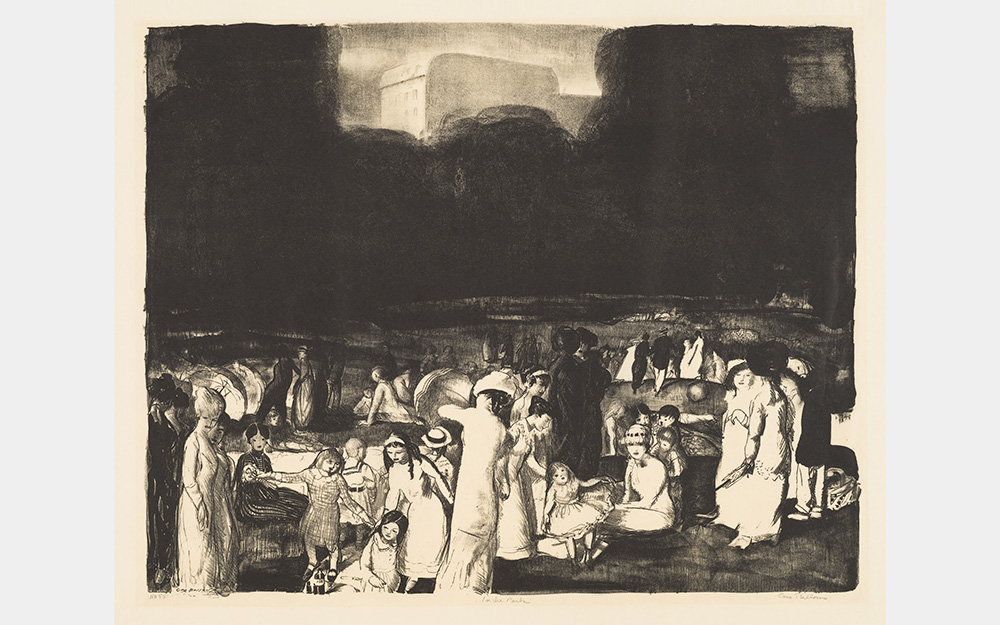
George Bellows (American, 1882-1925). In the Park, Dark, 1916, lithograph, Gift of Herbert Greer French, 1940.80
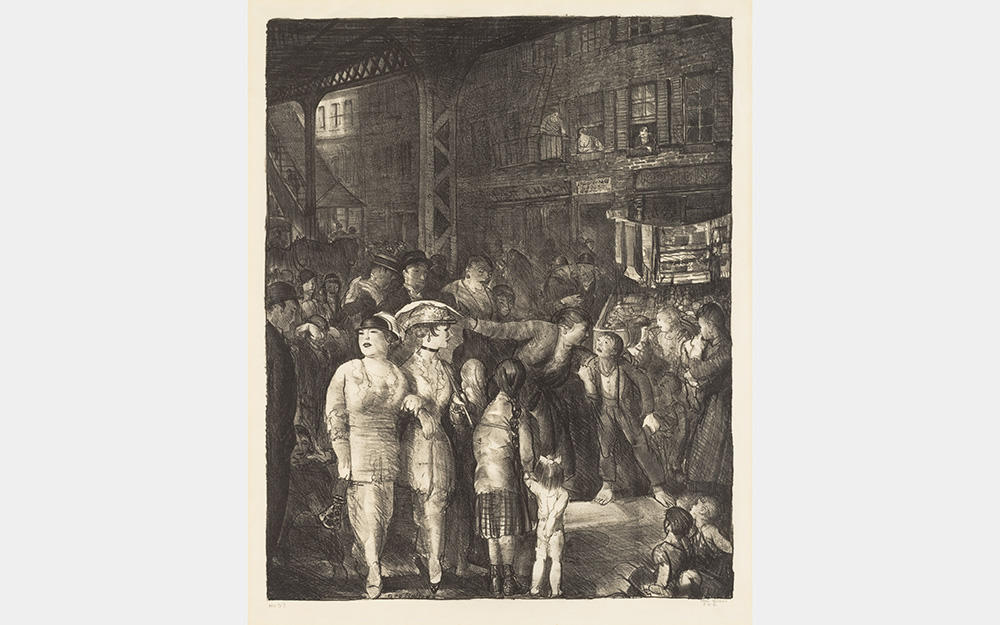
George Bellows (American, 1882-1925). The Street, 1917, lithograph, Lent by Dr. James, and Mrs. Lois Sanitato
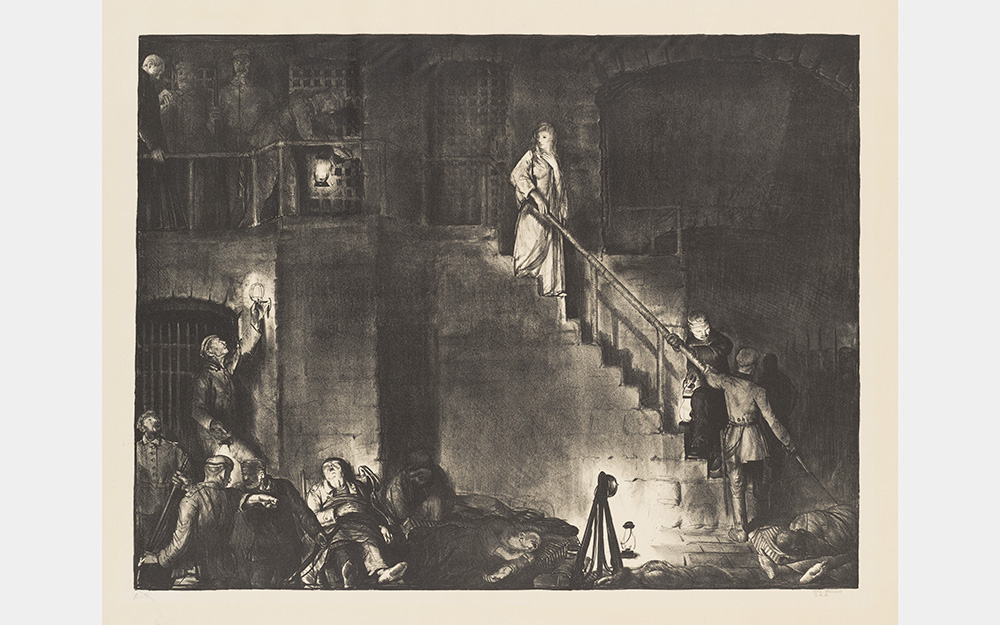
George Bellows (American, 1882-1925). Murder of Edith Cavell, 1918, lithograph, Lent by Dr. James, and Mrs. Lois Sanitato.
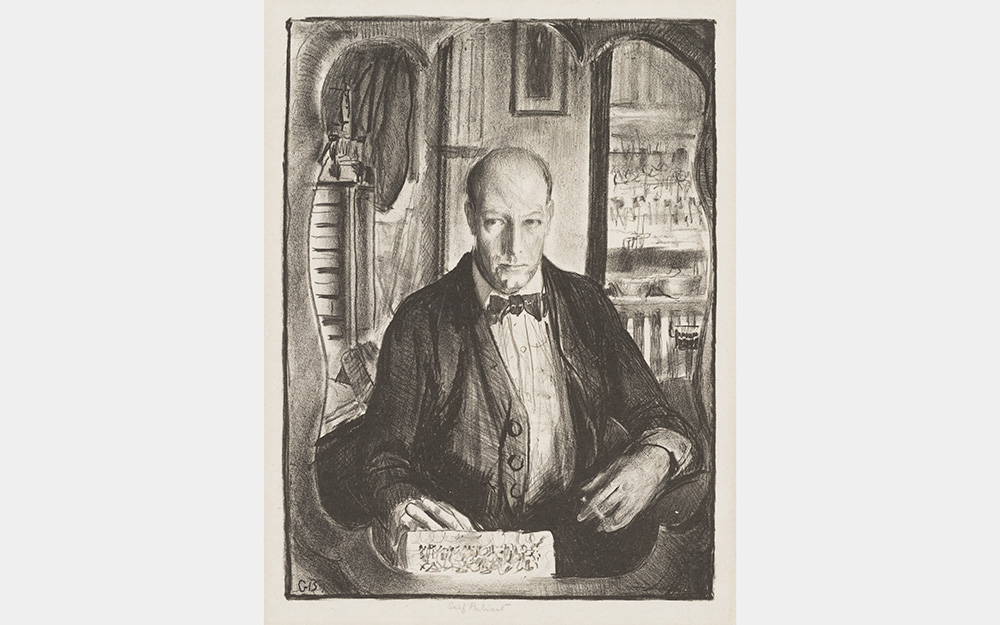
George Bellows (American, 1882-1925). Self-Portrait, 1921, lithograph, Lent by Dr. James, and Mrs. Lois Sanitato
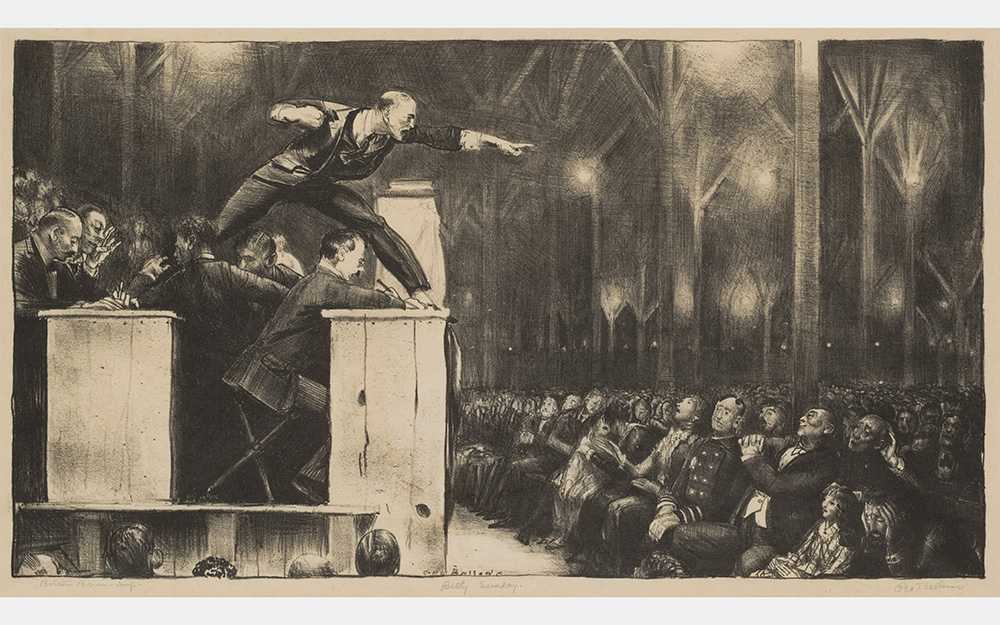
George Bellows (American, 1882-1925). Billy Sunday, 1923, lithograph, Lent by Dr. James, and Mrs. Lois Sanitato
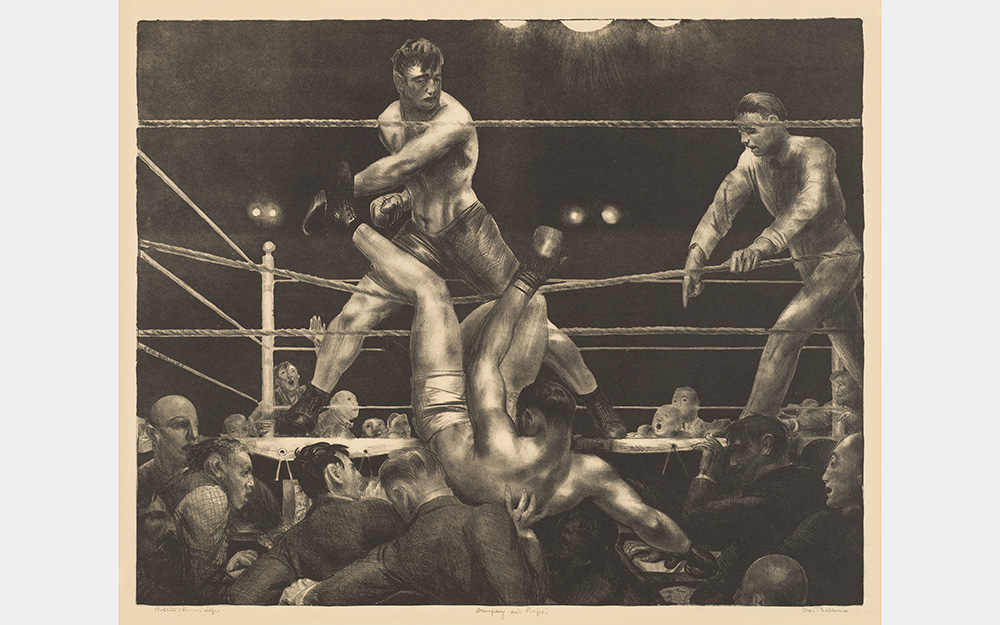
George Bellows (American, 1882-1925). Dempsey and Firpo, 1924, lithograph, Gift of Albert P. Strietmann, 1953.243
George Bellows: American Life in Print
October 25, 2024–February 9, 2025
Vance Waddell and Mayerson Galleries (Galleries 124 and 125)
Free Admission
Friends of Prints
Press Release
George Bellows (1882–1925) was a painter, illustrator, and printmaker. The exhibition will commemorate the 100th anniversary of the artist’s passing and feature 55 lithographs and drawings gifted and lent by Dr. James and Mrs. Lois Sanitato.
Bellows chose to leave his native Columbus, Ohio, and moved to New York in 1904 to become a professional artist. He enrolled in the New York School of Art where he became a student of Robert Henri (1865–1929). Henri encouraged his students to move beyond European traditions, to open their eyes to contemporary life and the transformation of the New York urban environment.
By the age of 26 Bellows had garnered critical acclaim, becoming the youngest elected member to the National Academy. During his 20-year career, his paintings captured the spirit and character of life in the first quarter of the twentieth century. Financially successful, in 1916, he set up set up a lithograph press in his studio at a time when the medium was associated with ephemeral commercial art and collectors’ favored etchings.
Over the next nine years Bellows executed more than 190 prints, almost single-handedly elevating lithography to a fine art in the United States. The inherent flexibility of the process, its potential for drawing in vigorous strokes, and its richness of tone were well suited to his expressive yet journalistic style. The subjects that fascinated him range from intimate studies of his family and friends to snap shots of American life, the atrocities of World War I, and what first caught the public’s attention: boxing. All were new and undeniably American subjects. Today, Bellows is known for his paintings, yet his accomplishments in lithography stand on equal footing.
Featured Media
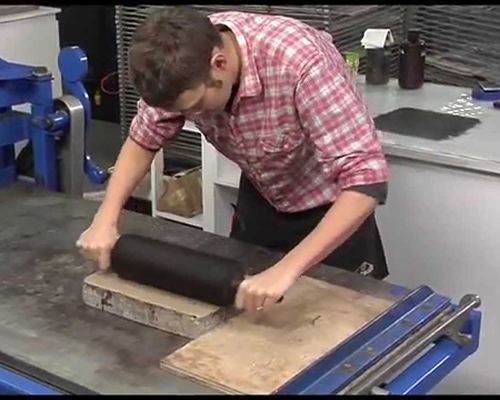 Video
Video
Learn the lithography process.
 Exhibition Content
Exhibition Content
Download complete George Bellows large print labels, optimized for screen reader. Large print labels are also available in print in the gallery.
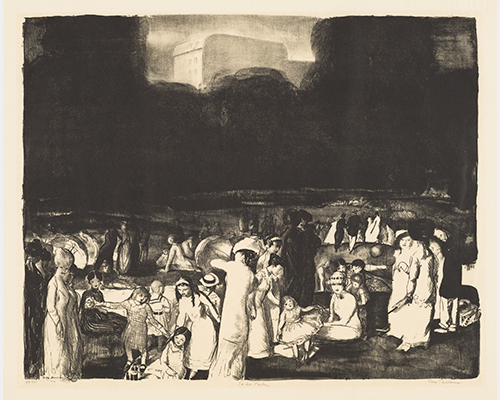 Survey
Survey
Share your feedback about the exhibition.
Hear verbal descriptions of highlighted artworks and interpretive content for the exhibition, wherever you are.
Members Opening
Thursday, October 24, 5–7 p.m.
CAM Presents: A Conversation on George Bellow's Lithographs
Thursday, October 24 at 7 p.m.
CAM Kids Day: Prints, Drawings, and People
Saturday, November 2, 10 a.m.–3 p.m.
Create Plus: Pronto Plate Lithography
Saturday, December 14, 1–4 p.m.
This exhibition has been made possible in part by the National Endowment for the Humanities: Democracy demands wisdom. Any views, findings, conclusions or recommendations expressed in this exhibition do not necessarily represent those of Ohio Humanities or the National Endowment for the Humanities.
 |
 |
Support provided by the IFPDA Foundation.
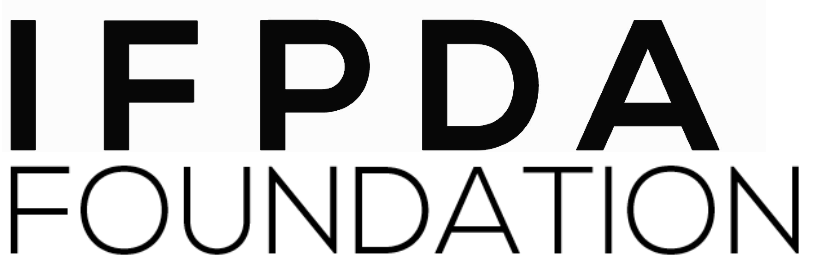 |
Cincinnati, OH 45202
Toll Free: 1 (877) 472-4226
Museum Hours
Museum Shop
Terrace Café
Library
Cincinnati Art Museum is supported by the tens of thousands of people who give generously to the annual ArtsWave Campaign, the region's primary source for arts funding.

Free general admission to the Cincinnati Art Museum is made possible by a gift from the Rosenthal Family Foundation. Exhibition pricing may vary. Parking at the Cincinnati Art Museum is free.
Generous support for our extended Thursday hours is provided by Art Bridges Foundation’s Access for All program.

General operating support provided by:



